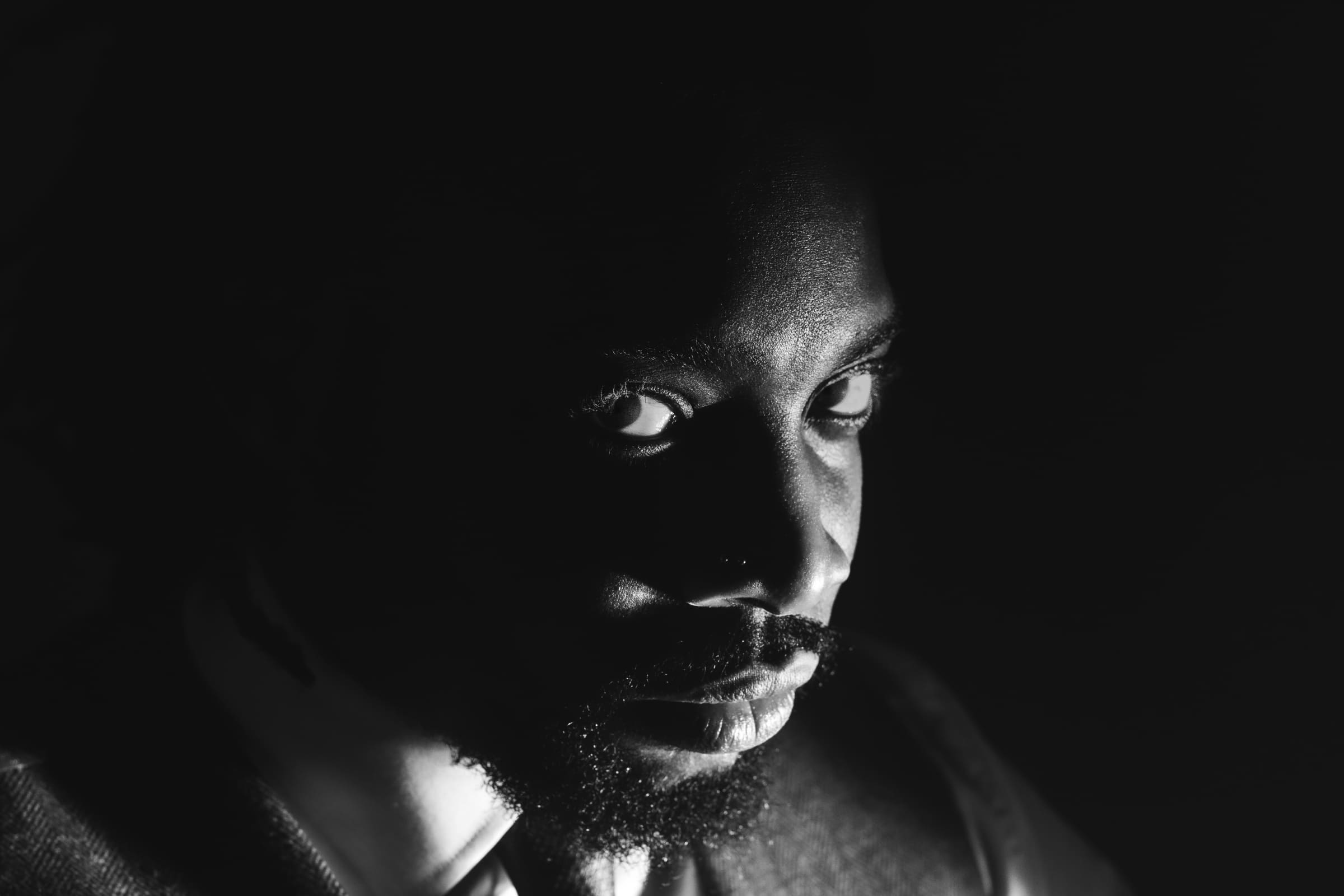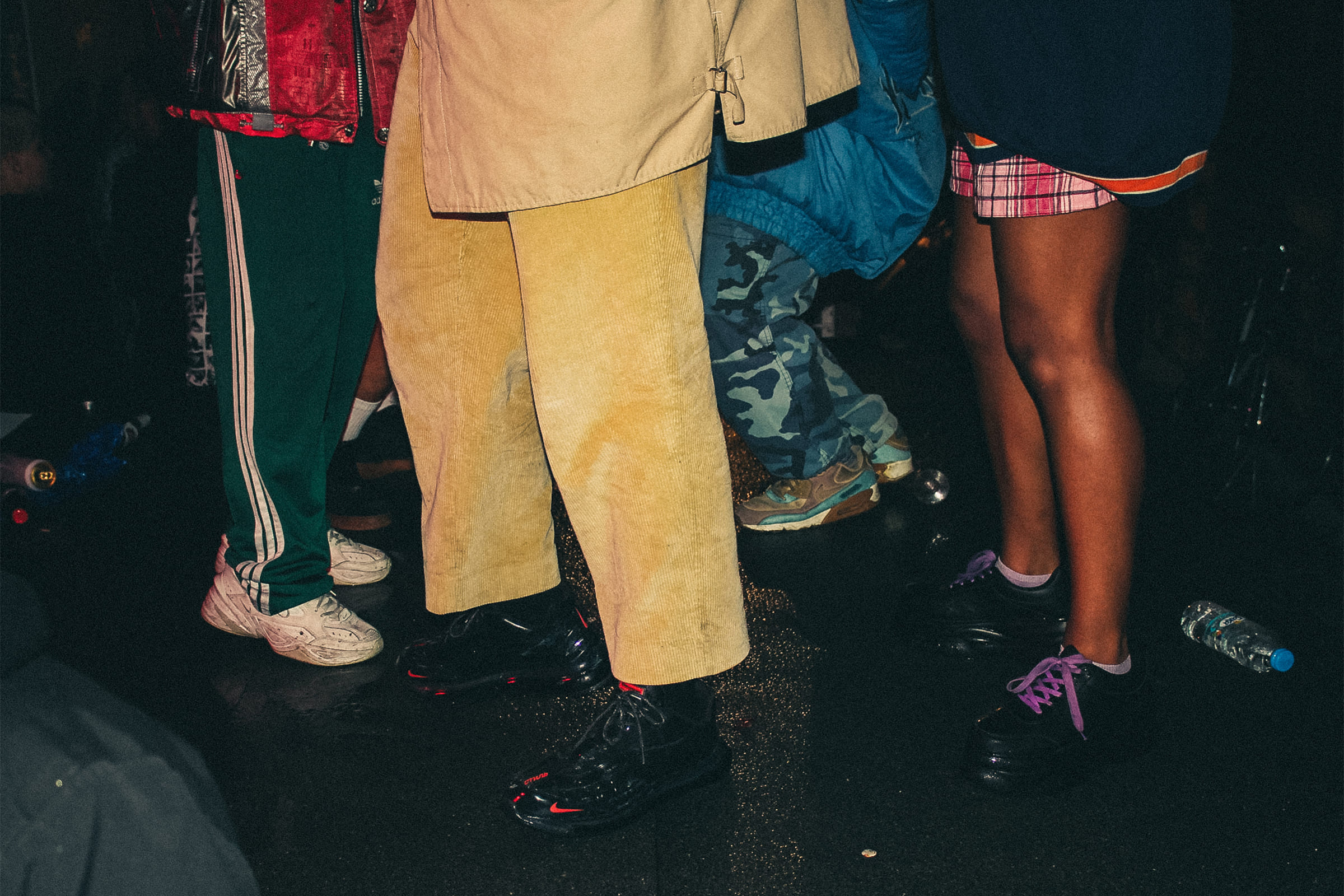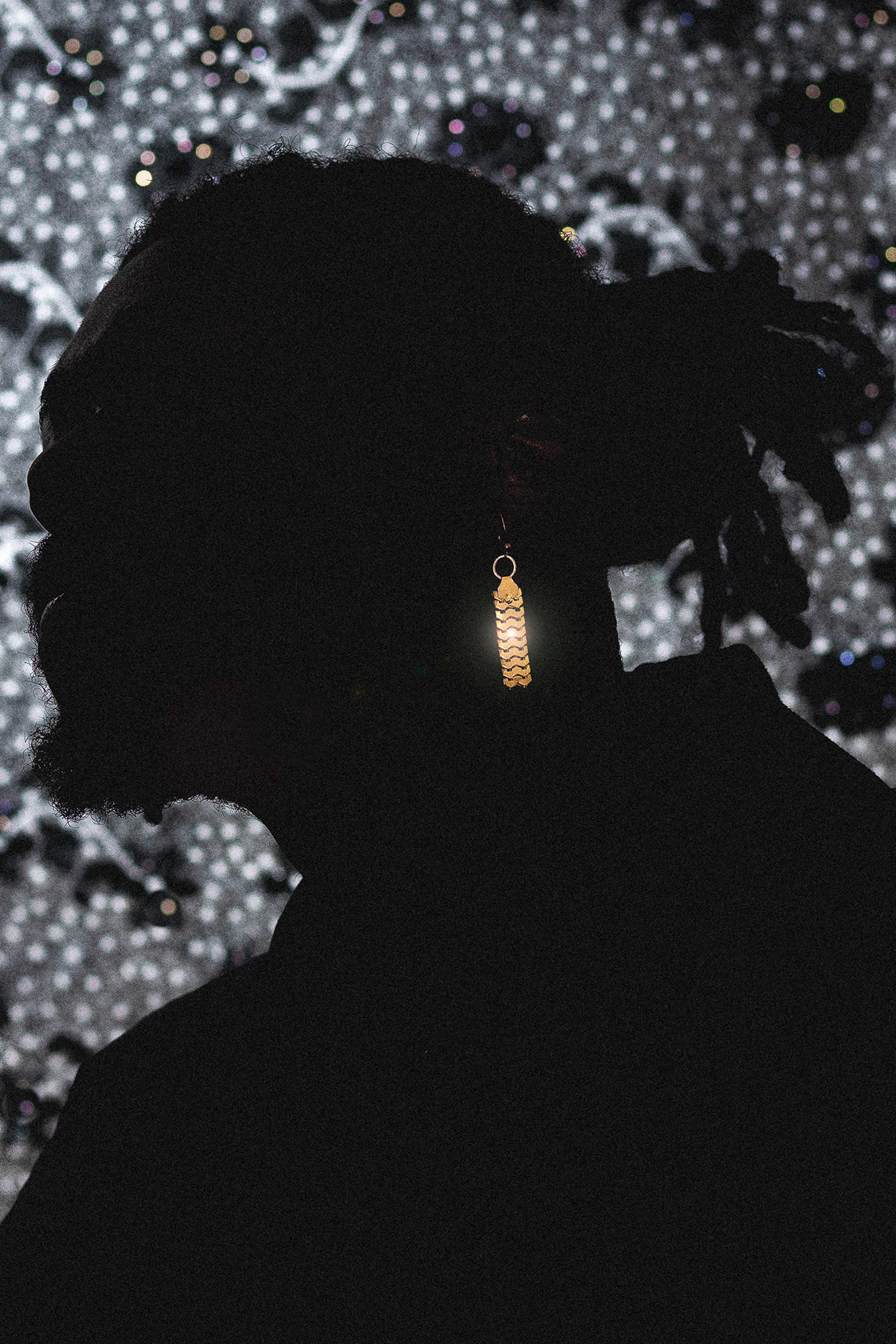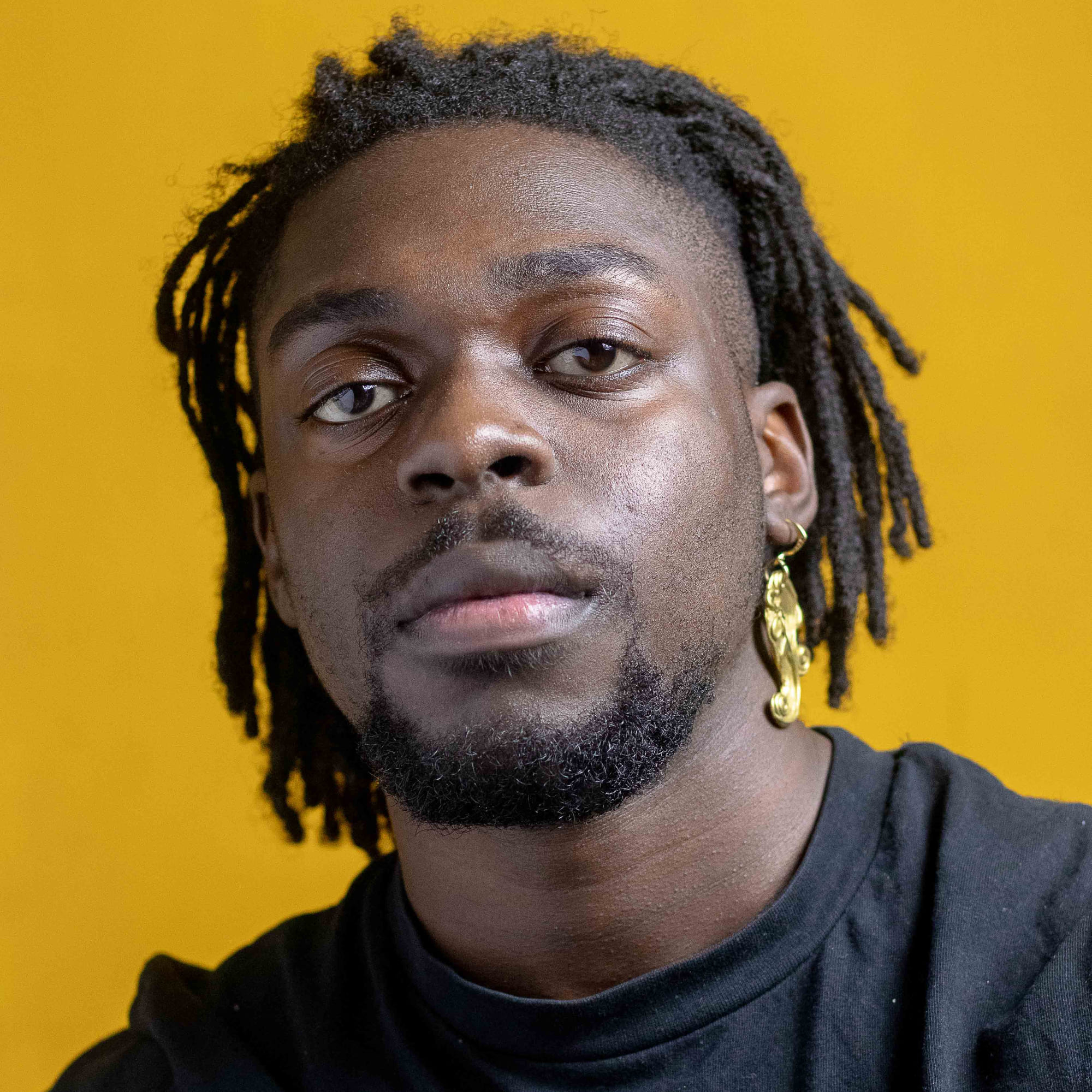Establishing a pathway that is enveloped in conceptual thinking, Kojo Apeagyei continues to explore the creative spectrum. A writer, poet, photographer, and project manager, the Young People's Laureate for London nominee has been consistent in utilising visual language to enhance his ideas. With much of his practice being a form of self-articulation, Kojo prioritises the exploration of identity throughout all the mediums he works in. From our discourse on accessibility of meaning and establishing narratives, it is clear how his work elicits emotions from listeners. I spoke with Kojo to discuss his creative practice, influences, introspection, and the dynamics and nuances within his work.
NAHUEL CONTRERAS Who are your influences and how do they impact your work?
 KOJO APEAGYEI
My influences vary across artistic mediums- photography, writing, music etc. I find I pull from many places. In terms of writing, which is where it all began, some of my most predominant influences are MF DOOM, Earl Sweatshirt, Danez Smith, Claudia Rankine, Simone Weil, David Foster Wallace, and Audre Lorde. These writers influence and reflect different elements of myself. Almost narcissistically so, I see myself in their work, and then I see elements of them in my own work. I remember hearing MF DOOM bars for the first time and being like “rah, how on earth did he come up with that??” I wanted to write anything as ‘head-spun’ as DOOM made me feel. For photography, my influences largely begin in cinema, which is a whole other thing in itself.
NC
In your artist statement you describe yourself as living within the space between prose and poetry. Can you elaborate on how you establish a separation between contemporary lyrical poetry and traditional narrative prose?
KA
Hm. I can’t say I ever establish a conscious separation. It was a style of writing picked upon by the poets, Malika Booker and Roger Robinson, which clued me into what I was doing before I could recognise it. My writing has always weaved in and out of the two, probably attributed to my messy list of influences.
NC
How important is narrative clarity and accessibility of meaning? Should a reader or listener have to work hard to decipher the poem?
KA
Good question. I think the audience must absolutely do some of the work to decipher a poem; accessibility should not fall entirely on the writer to make the text palatable and easily understood- that cheapens the art form. However, I’ve never been a fan of obscure work for the sake of being obscure, that’s equally dead. The writer always needs to check-in with themselves and ask if they want to be understood, and to what degree. I look back at pieces I’ve written and realise how I was hiding behind nonsensical metaphors and techniques because I feared that vulnerability and being seen was terrifying!
NC
Your performances “Self-Care Series #1” and “Part 2: Hotel Hell Hostel” demonstrate your ability to utilise visual language to discern the elements of experience. As a poet, writer, and photographer, do you focus on introspection and the exploration of identity in all of the mediums you work in?
KA
In terms of creative writing, exploring ‘identity’ and ‘memory’ are absolutely the focal points. The page was my first therapist, so I find that to be the genesis of exploration for me. In terms of photography though, I’m not sure. I’m still exploring what my pull is with this medium, what parts of myself am I seeking in my lens? Currently I’m shooting more than ever before, more so than writing even, so the answer to this question is something I’m searching for, it’s fun. I know I’m reflecting something within me, but what that is, I can’t yet say. That’s the journey though and I’m enjoying it.
NC
Working in the fields of poetry, photography, and writing, are there any correlations between the creative processes of each medium?
KA
There can be, I’m exploring ways of unifying the different mediums, simply to see what that chimera would look like. Really, it’s all just storytelling anyway, looking into a house from different windows. The overlaps are there but it really depends on what story I’m aiming to tell.
KOJO APEAGYEI
My influences vary across artistic mediums- photography, writing, music etc. I find I pull from many places. In terms of writing, which is where it all began, some of my most predominant influences are MF DOOM, Earl Sweatshirt, Danez Smith, Claudia Rankine, Simone Weil, David Foster Wallace, and Audre Lorde. These writers influence and reflect different elements of myself. Almost narcissistically so, I see myself in their work, and then I see elements of them in my own work. I remember hearing MF DOOM bars for the first time and being like “rah, how on earth did he come up with that??” I wanted to write anything as ‘head-spun’ as DOOM made me feel. For photography, my influences largely begin in cinema, which is a whole other thing in itself.
NC
In your artist statement you describe yourself as living within the space between prose and poetry. Can you elaborate on how you establish a separation between contemporary lyrical poetry and traditional narrative prose?
KA
Hm. I can’t say I ever establish a conscious separation. It was a style of writing picked upon by the poets, Malika Booker and Roger Robinson, which clued me into what I was doing before I could recognise it. My writing has always weaved in and out of the two, probably attributed to my messy list of influences.
NC
How important is narrative clarity and accessibility of meaning? Should a reader or listener have to work hard to decipher the poem?
KA
Good question. I think the audience must absolutely do some of the work to decipher a poem; accessibility should not fall entirely on the writer to make the text palatable and easily understood- that cheapens the art form. However, I’ve never been a fan of obscure work for the sake of being obscure, that’s equally dead. The writer always needs to check-in with themselves and ask if they want to be understood, and to what degree. I look back at pieces I’ve written and realise how I was hiding behind nonsensical metaphors and techniques because I feared that vulnerability and being seen was terrifying!
NC
Your performances “Self-Care Series #1” and “Part 2: Hotel Hell Hostel” demonstrate your ability to utilise visual language to discern the elements of experience. As a poet, writer, and photographer, do you focus on introspection and the exploration of identity in all of the mediums you work in?
KA
In terms of creative writing, exploring ‘identity’ and ‘memory’ are absolutely the focal points. The page was my first therapist, so I find that to be the genesis of exploration for me. In terms of photography though, I’m not sure. I’m still exploring what my pull is with this medium, what parts of myself am I seeking in my lens? Currently I’m shooting more than ever before, more so than writing even, so the answer to this question is something I’m searching for, it’s fun. I know I’m reflecting something within me, but what that is, I can’t yet say. That’s the journey though and I’m enjoying it.
NC
Working in the fields of poetry, photography, and writing, are there any correlations between the creative processes of each medium?
KA
There can be, I’m exploring ways of unifying the different mediums, simply to see what that chimera would look like. Really, it’s all just storytelling anyway, looking into a house from different windows. The overlaps are there but it really depends on what story I’m aiming to tell.
 NC
During the current socio-political climate, how have you been able to manifest inspiration and motivation?
KA
It’s interesting... I feel more motivated than ever to be honest. I had a chat with a therapist last October whilst going through a depressive period, and it put things into perspective for me. I gained major clarity on some of my goals, and having those goals suddenly feel achievable gave me the motivation to just try things again. Fundamentally I’m a maker, I know this now. I’m at my best when I’m making something or doing something, if I stagnate for too long I lose myself and begin to spiral. So, you would expect lockdown to be rife for that, which it is, but I’m having so much fun pushing the creative boundaries with photography, and connecting with poets (digitally) again, it’s the compass I needed.
NC
Thinking about reference points, you tie together themes such as politics, culture, philosophy, and introspection into your work. Your articles “Stealing from the Melting Pot – the Cultural Appropriation of Plantain” and “What do different generations of Ghanaians make of Jerry Rawlings’ legacy?” demonstrate this. What content do you most prefer to write about?
KA
Good question. Probably because of my scattered influences and interests, but I feel I can do it all. There’s no overall preference for my writing, which is somewhat a hindrance in its own way. I just like to write.
NC
During the current socio-political climate, how have you been able to manifest inspiration and motivation?
KA
It’s interesting... I feel more motivated than ever to be honest. I had a chat with a therapist last October whilst going through a depressive period, and it put things into perspective for me. I gained major clarity on some of my goals, and having those goals suddenly feel achievable gave me the motivation to just try things again. Fundamentally I’m a maker, I know this now. I’m at my best when I’m making something or doing something, if I stagnate for too long I lose myself and begin to spiral. So, you would expect lockdown to be rife for that, which it is, but I’m having so much fun pushing the creative boundaries with photography, and connecting with poets (digitally) again, it’s the compass I needed.
NC
Thinking about reference points, you tie together themes such as politics, culture, philosophy, and introspection into your work. Your articles “Stealing from the Melting Pot – the Cultural Appropriation of Plantain” and “What do different generations of Ghanaians make of Jerry Rawlings’ legacy?” demonstrate this. What content do you most prefer to write about?
KA
Good question. Probably because of my scattered influences and interests, but I feel I can do it all. There’s no overall preference for my writing, which is somewhat a hindrance in its own way. I just like to write.
 NC
You have also produced community-orientated projects within cultural and social spaces. How have you had to adapt your project arrangements during the ongoing pandemic?
KA
Difficulty, but with grace. Some of the projects I was hoping to work on for 2020 collapsed at the onset of lockdown, and it wasn’t feasible to revive them at the time. I didn’t want to force any projects, so I’m taking time away until it feels right. Also I’ve been repeating the mantra of “Be Scottie” ever since The Last Dance dropped on Netflix. I’m very content to support and platform the immense amount of community-orientated work being done by others.
NC
Considering your affinity of film stills/screenshots (@printscreen.stein), have you considered working in film to conceptualise your ideas in the future?
KA
Yes! I’m dabbling in acting again, which is something I did often when I was younger. Honestly most of my time is spent watching movies so I really should make this move at some point, whether to work behind or in front of the camera, or in the writer’s room.
NC
Your photographic practice ranges from figurative portraiture, documentation, editorial, and landscapes. How do you work to compose a scene or figure?
NC
You have also produced community-orientated projects within cultural and social spaces. How have you had to adapt your project arrangements during the ongoing pandemic?
KA
Difficulty, but with grace. Some of the projects I was hoping to work on for 2020 collapsed at the onset of lockdown, and it wasn’t feasible to revive them at the time. I didn’t want to force any projects, so I’m taking time away until it feels right. Also I’ve been repeating the mantra of “Be Scottie” ever since The Last Dance dropped on Netflix. I’m very content to support and platform the immense amount of community-orientated work being done by others.
NC
Considering your affinity of film stills/screenshots (@printscreen.stein), have you considered working in film to conceptualise your ideas in the future?
KA
Yes! I’m dabbling in acting again, which is something I did often when I was younger. Honestly most of my time is spent watching movies so I really should make this move at some point, whether to work behind or in front of the camera, or in the writer’s room.
NC
Your photographic practice ranges from figurative portraiture, documentation, editorial, and landscapes. How do you work to compose a scene or figure?
 KA
As a storyteller I’m fixated on composing shots to reflect a narrative, or feeling. Composing a scene throws up a few questions, such as ‘does this shot communicate what I want it to?’ Then I must discover why, or why not. It’s almost a process of exploration and dissection, so every scene is different but that’s the basic thought process. I’m still learning.
NC
You also photograph events, drawing on lived experiences and fleeting moments. When documenting social scenes, what elements are you looking to capture?
KA
I love capturing moments where people are most natural, just being, and not performing for the lens, so candid shots are my preference. ‘People-watching’ is fascinating. There’s magic in watching people move through space, we don’t often notice it because it’s not spectacular, but people are really beautiful. The way we interact and contemplate, I find that unbelievably fascinating. The lens disturbs that process and turns it into a performance, which is often fine, but generally not what I’m interested in. I’m also not comfortable with silently taking pictures on the sly like a creep, so I at least try to make people aware.
NC
How does the candid spontaneity of photographing events compare with the creative direction associated with portraiture?
KA
Different ways of telling different stories. Portraiture is generally overt; you see the lens as the lens sees you. There’s a performance to it, and that performance tells a specific, controlled narrative. Candid photography tells an authentic narrative, showing you the ambient mood at a moment in time. Really it just depends on which narrative you’re trying to capture.
KA
As a storyteller I’m fixated on composing shots to reflect a narrative, or feeling. Composing a scene throws up a few questions, such as ‘does this shot communicate what I want it to?’ Then I must discover why, or why not. It’s almost a process of exploration and dissection, so every scene is different but that’s the basic thought process. I’m still learning.
NC
You also photograph events, drawing on lived experiences and fleeting moments. When documenting social scenes, what elements are you looking to capture?
KA
I love capturing moments where people are most natural, just being, and not performing for the lens, so candid shots are my preference. ‘People-watching’ is fascinating. There’s magic in watching people move through space, we don’t often notice it because it’s not spectacular, but people are really beautiful. The way we interact and contemplate, I find that unbelievably fascinating. The lens disturbs that process and turns it into a performance, which is often fine, but generally not what I’m interested in. I’m also not comfortable with silently taking pictures on the sly like a creep, so I at least try to make people aware.
NC
How does the candid spontaneity of photographing events compare with the creative direction associated with portraiture?
KA
Different ways of telling different stories. Portraiture is generally overt; you see the lens as the lens sees you. There’s a performance to it, and that performance tells a specific, controlled narrative. Candid photography tells an authentic narrative, showing you the ambient mood at a moment in time. Really it just depends on which narrative you’re trying to capture.
 NC
Does your literary background influence your photography?
KA
I’m sure it does. For example, I remember editing pictures using Lightroom for the first time in 2015 and maxing out the vibrancy so all the colours would pop. At first, I was like, “Boom. Amazing. I killed these. Getting all the likes with these” then later I noticed something looked off about the images. Way off. They were sickly surreal, and not intentionally surreal, it looked weird. I took the mantra of ‘less is more’ and began applying it.
NC
As Black artists, creating a perspective of visual resistance runs parallel to societal and systemic issues. Do you work to highlight different nuances of Black experiences?
KA
I try to. It’s important to show the multiple ways of being, to highlight those nuances. We’re not monolithic. There are obvious commonalities, but the Venn diagram of our experiences and identities is truly endless. I try to be a bit more truthful to myself, and share the various dimensions, to give space to the areas of myself I may not be totally comfortable with. Part of me feels like I owe it to others who encounter my work, so they can feel that connection and representation. But really, I owe it to myself just as much.
NC
Personally or professionally, what are you currently focusing on?
KA
I’m excited to answer this question! I’m working on a photographic series, which largely centres my love for cinema. I’m also working on a poetry collection, which explores memory, substance abuse, faith and water.
NC
Does your literary background influence your photography?
KA
I’m sure it does. For example, I remember editing pictures using Lightroom for the first time in 2015 and maxing out the vibrancy so all the colours would pop. At first, I was like, “Boom. Amazing. I killed these. Getting all the likes with these” then later I noticed something looked off about the images. Way off. They were sickly surreal, and not intentionally surreal, it looked weird. I took the mantra of ‘less is more’ and began applying it.
NC
As Black artists, creating a perspective of visual resistance runs parallel to societal and systemic issues. Do you work to highlight different nuances of Black experiences?
KA
I try to. It’s important to show the multiple ways of being, to highlight those nuances. We’re not monolithic. There are obvious commonalities, but the Venn diagram of our experiences and identities is truly endless. I try to be a bit more truthful to myself, and share the various dimensions, to give space to the areas of myself I may not be totally comfortable with. Part of me feels like I owe it to others who encounter my work, so they can feel that connection and representation. But really, I owe it to myself just as much.
NC
Personally or professionally, what are you currently focusing on?
KA
I’m excited to answer this question! I’m working on a photographic series, which largely centres my love for cinema. I’m also working on a poetry collection, which explores memory, substance abuse, faith and water.
